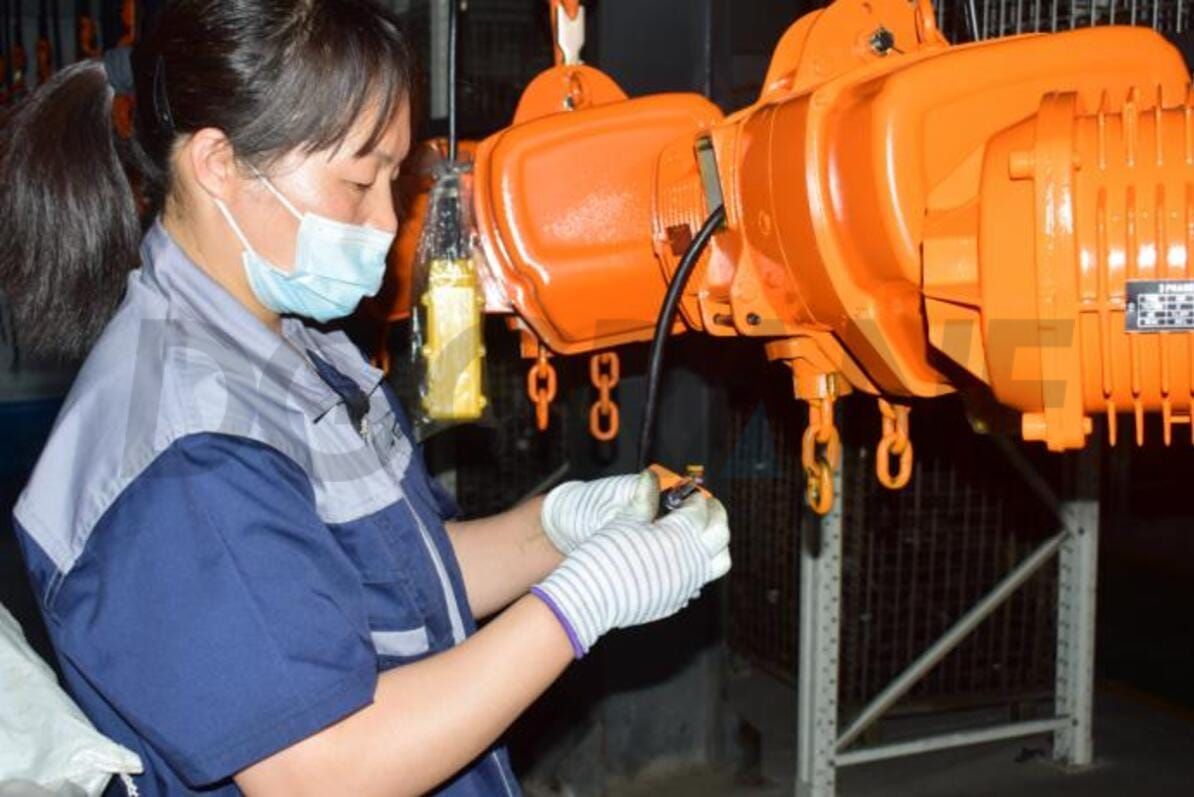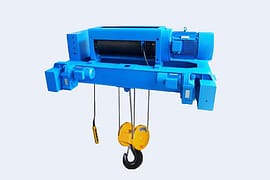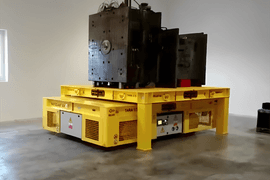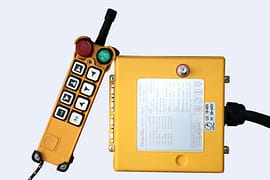Overhead Crane Hoist Inspections Checklist: Save Costs and Prevent Risks

Table of Contents
Electric hoist inspections are a critical aspect of ensuring safe and efficient operations in lifting tasks. Regular and thorough checks help identify potential risks, prevent accidents, and prolong the lifespan of the equipment. This guide will outline key areas to focus on during electric hoist safety inspections, ensuring compliance with industry standards and safeguarding workplace safety.
Purpose and Importance of Inspections
When using an overhead crane hoist, daily hoist inspections are a critical step in ensuring the safe and stable operation of the equipment. This not only affects the work efficiency of the equipment but also directly impacts the safety of the operators and the smooth completion of production tasks. The following outlines the purpose and importance of inspections from multiple perspectives:
Ensuring the Safety of Personnel and Equipment
- Preventing Accidents: If the hoist has mechanical or electrical faults, such as broken steel ropes or malfunctioning hooks, it could lead to severe safety accidents, resulting in equipment damage or even personal injury.
- Reducing Risks: Daily inspections help identify potential hazards early, preventing sudden equipment failures during operation.
Extending the Equipment’s Lifespan
- Reducing Wear: Regular hoist inspections can promptly identify issues such as component wear and insufficient lubrication, allowing for appropriate maintenance measures to be taken and preventing premature aging of components.
- Lowering Maintenance Costs: If small issues are not addressed in time, they may escalate into more serious mechanical failures, increasing repair costs and possibly leading to equipment obsolescence.
- Statistical Support: According to industry studies, regular maintenance and inspections can reduce mechanical failure rates by 30%-40% and extend equipment life by about 20%.
Improving Work Efficiency
- Reducing Downtime: Timely repairs after inspections can prevent equipment from unexpectedly shutting down due to faults, ensuring the continuity of the production line.
- Optimizing Equipment Performance: Daily inspections of the hoist ensure the equipment operates at its best, reducing unnecessary delays and efficiency losses.
Meeting Industry Standards and Legal Requirements
- Legal Compliance: Many countries and industries have clear requirements for the inspection frequency and scope of overhead equipment. For example, the U.S. OSHA standard (29 CFR 1910.179) mandates regular inspections for lifting equipment.
- Insurance Requirements: Many insurance companies require equipment owners to provide inspection records to ensure compliance with coverage conditions.
Cultivating a Safety Culture
- Raising Employee Awareness: Through daily inspections, operators become more familiar with the equipment’s operating condition, increasing sensitivity to potential risks.
- Establishing Accountability: Regular inspections foster a culture of careful operations and help create a safe and reliable working environment.
Hoist Daily Inspection
The daily hoist inspection checklist for the overhead crane hoist ensures that key components, including the electrical control system, safety devices, steel wire rope, and equipment body, are in proper working condition. It verifies that the control handle, brake system, limit switch, and anti-unhook devices function correctly, while checking for any damage or wear in the wire rope, hooks, and pulleys.
Additionally, the condition of lifting pipes, frames, and safety markings are assessed. These inspections help detect issues early, extend equipment life, and ensure safety compliance.
For detailed inspection checklist information, please refer to the PDF below.
Hoist Monthly Inspection
The monthly hoist inspection checklist ensures the overhead crane hoist is in good condition, covering the running track, hook device, pulleys, wheels, steel wire rope, gears, and electrical components. It checks for secure fittings, proper lubrication, and the absence of wear, damage, or defects, ensuring the equipment operates safely and efficiently.
For detailed inspection checklist information, please refer to the PDF below.
Hoist Annual Inspection
The annual hoist inspection ensures the overhead crane hoist is in proper working condition, checking the track, buttons, cables, interlock devices, contactors, limit switches, brakes, and hook components for wear, damage, and secure fittings. This ensures safe and efficient operation by addressing issues promptly.
For detailed inspection checklist information, please refer to the PDF below.
Post-Inspection Treatment and Maintenance
Issue Classification and Priority Management
Issues identified during inspections should be classified to allow for proper allocation of maintenance resources:
- Low Priority: Minor wear or slight noise can be recorded and included in the regular maintenance schedule.
- Medium Priority: Insufficient lubrication or loose components need to be addressed promptly through scheduled maintenance.
- High Priority: Severe issues like broken steel ropes or malfunctioning brakes should result in immediate equipment shutdown and notification to the maintenance team.
Maintenance Actions After Inspection
Based on the issues recorded during the inspection, the following maintenance actions should be taken:
- Lubrication and Cleaning: Clean and lubricate key components such as pulleys, steel ropes, and rollers in a timely manner to reduce wear.
- Component Replacement: Replace any worn, deformed, or faulty components, such as hooks, steel ropes, or chains.
- Functional Testing: After repairs, conduct a comprehensive operational test to ensure that all systems are functioning correctly.
Recommendation: Develop a Maintenance Plan
A periodic maintenance plan should be developed based on equipment usage frequency and daily inspection results. For instance, conduct deep maintenance monthly and professional inspections every six months.
Frequently Asked Questions
If broken strands are found in the steel wire rope during inspection, can the hoist continue to be used?
It is not recommended to continue use. The need for replacement should be assessed based on the manufacturer's standards.
How long does an inspection take?
A daily inspection typically takes 15-30 minutes to complete.
Is professional certification required to perform the inspection?
Daily inspections do not require professional certification, but operators should receive basic training.
Tips and Recommendations
- Establish a daily inspection schedule and assign responsible personnel.
- Use digital tools (such as mobile apps) to record and track inspection results.
- Regularly review the checklist and update it to meet new standards or equipment requirements.
Conclusion
By implementing a scientific inspection process and a regular maintenance plan, you can significantly reduce operational costs, improve production efficiency, and ensure a safe and reliable working environment. Rather than waiting for failures to occur, it’s better to proactively prevent potential hazards and safeguard your business!
We are committed to providing professional equipment inspection and maintenance solutions, helping you maximize the value of your equipment. Contact us today to begin your journey toward efficient and safe equipment management!
Contact Details
DGCRANE is committed to providing the professional Overhead crane products and relavent service. Exported to Over 100 Countries, 5000+ Customers Choose Us, Worth to be Trusted.
Get In Touch
Fill out your details and someone from our sales team will get back to you within 24 hours!
























































































































